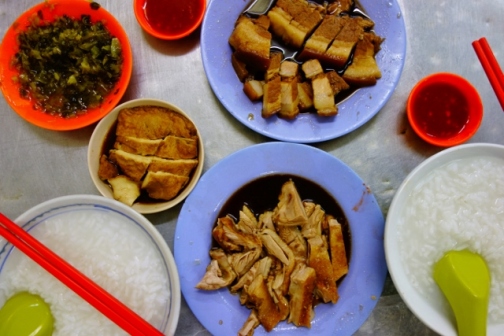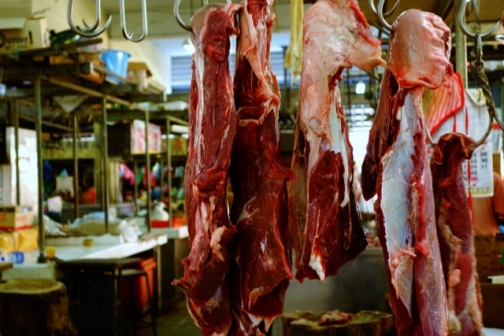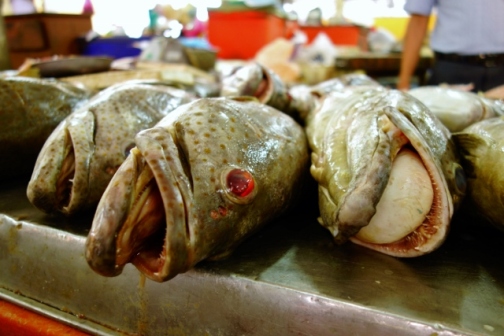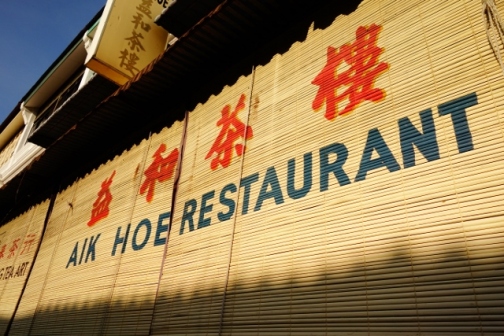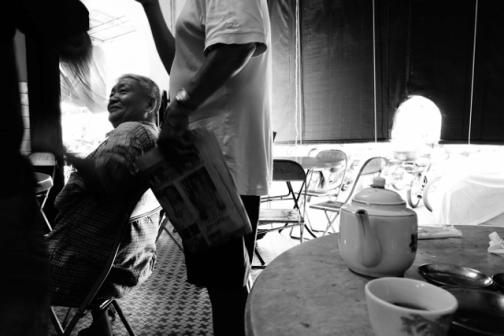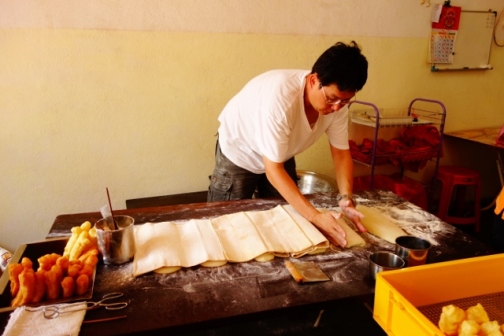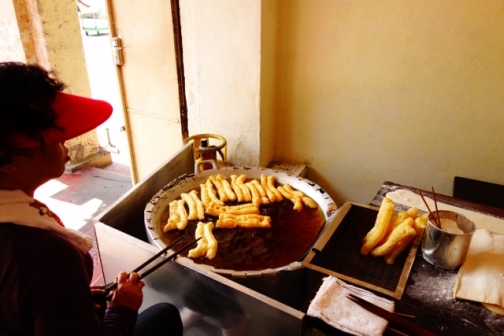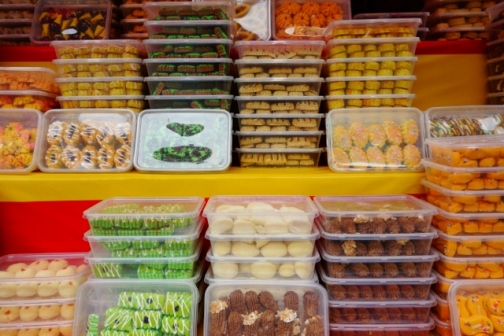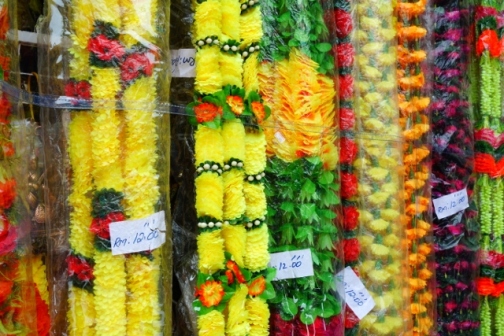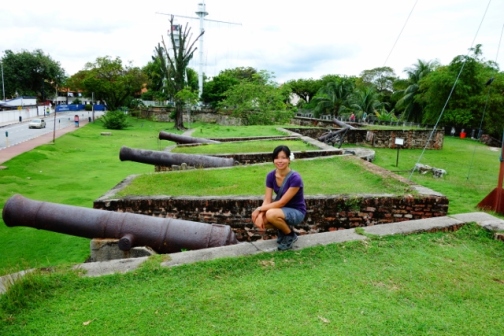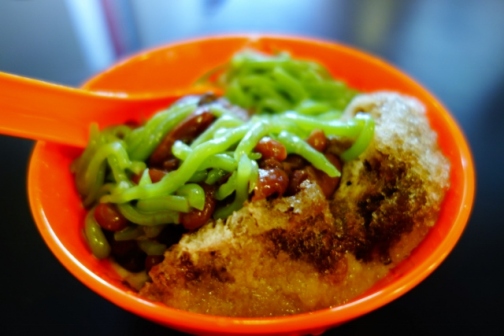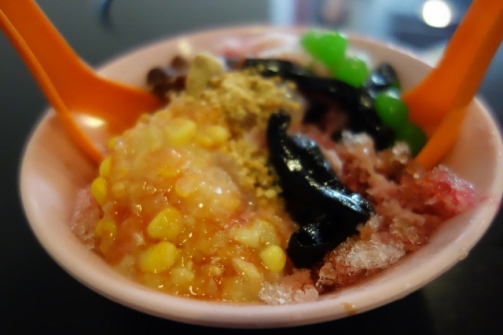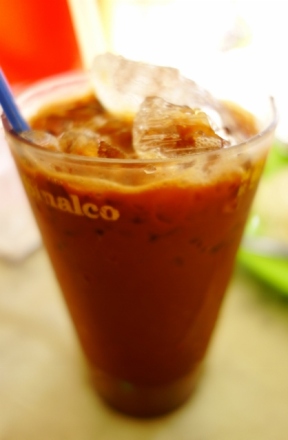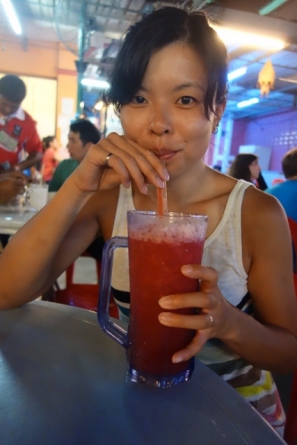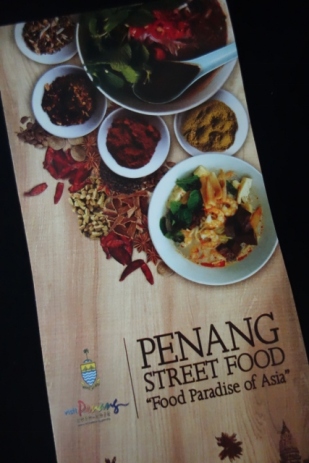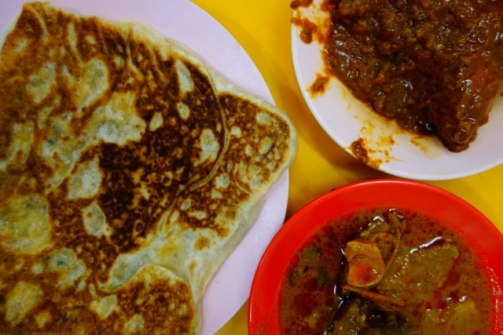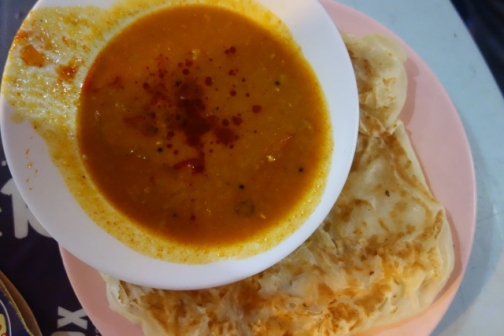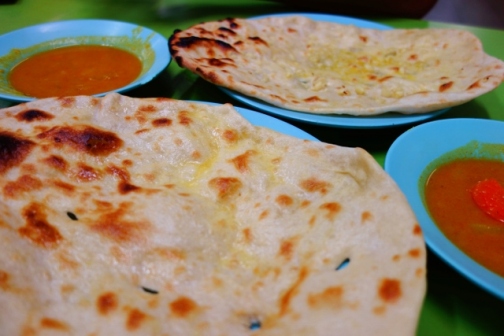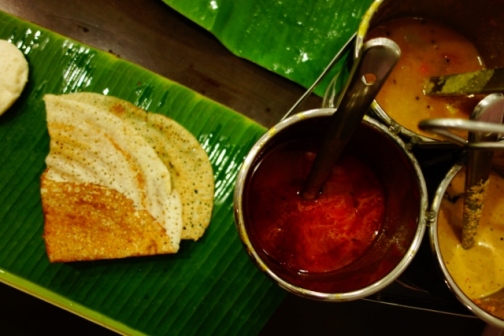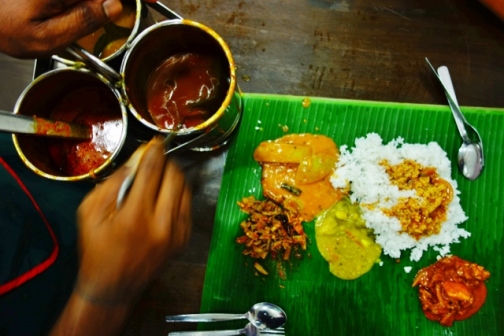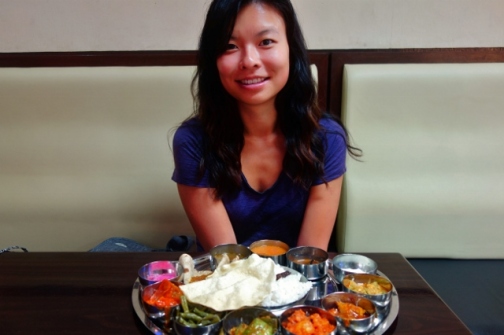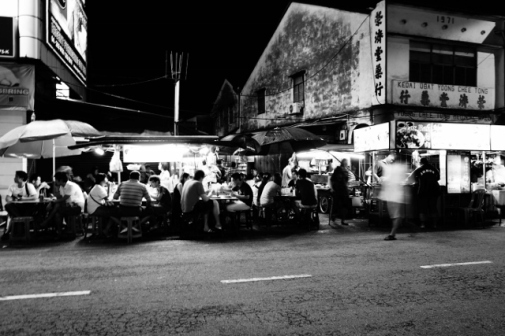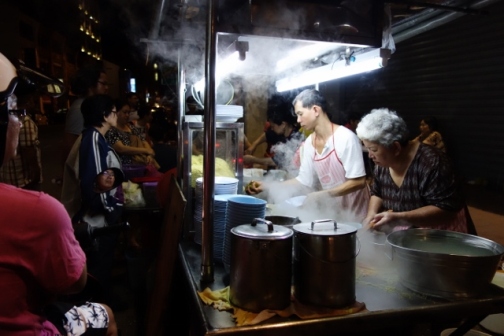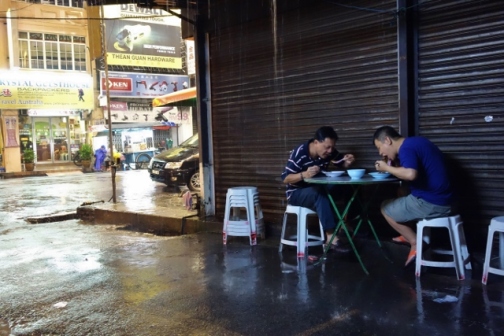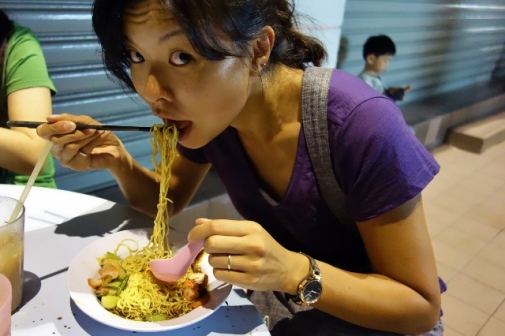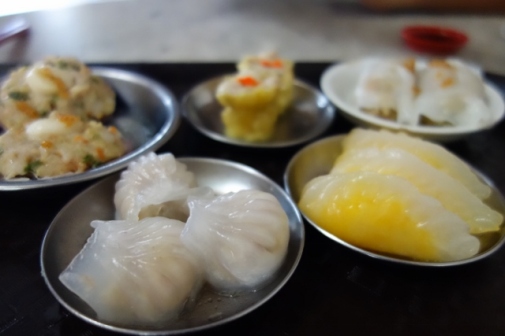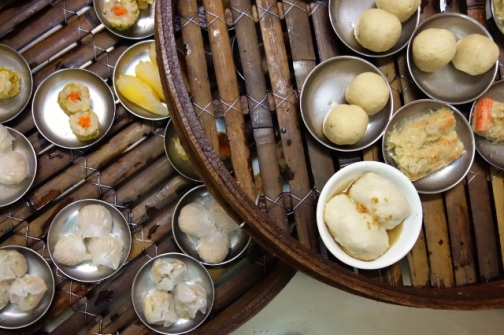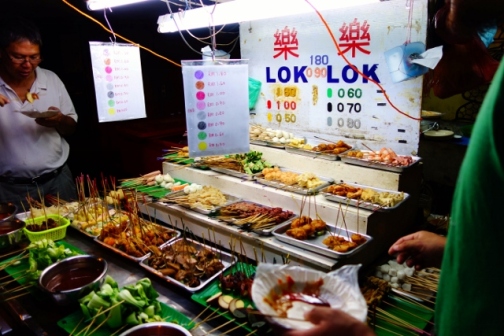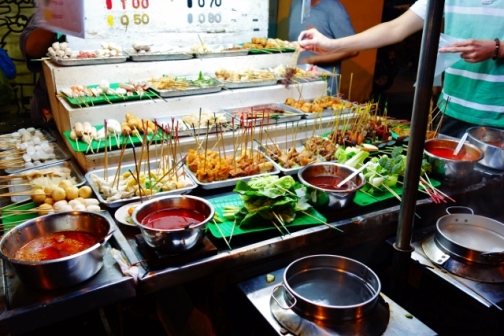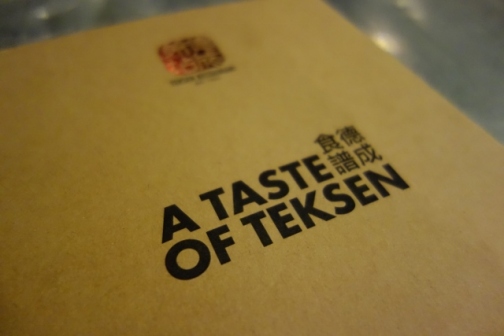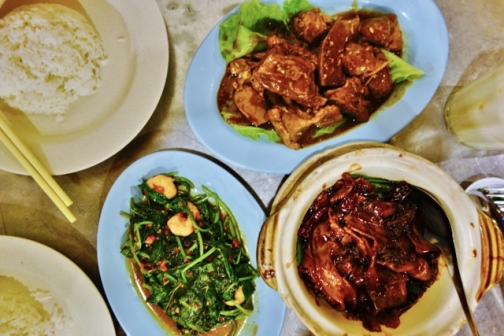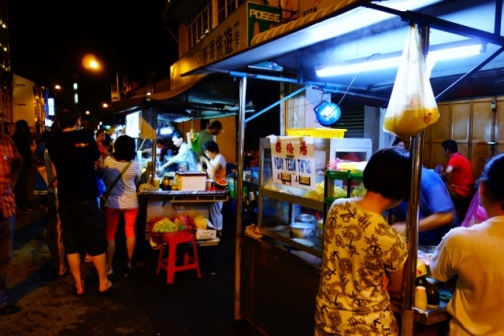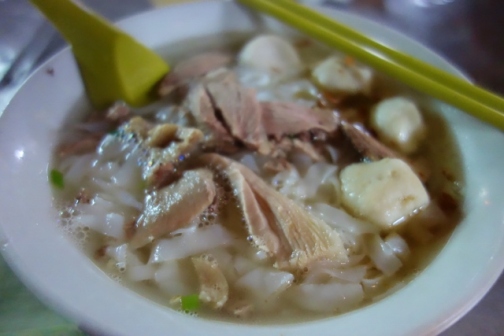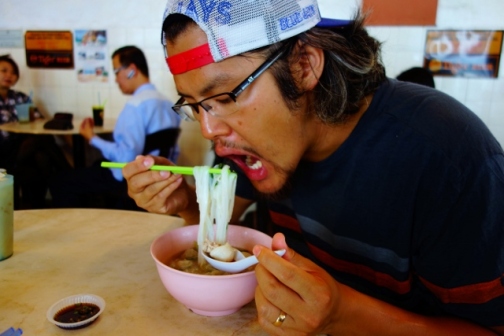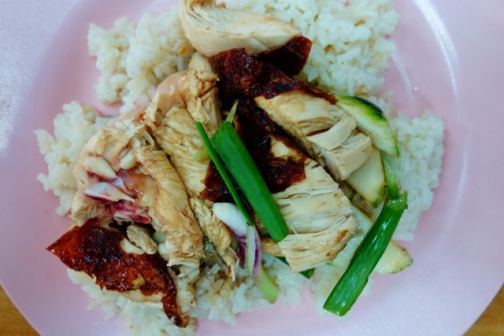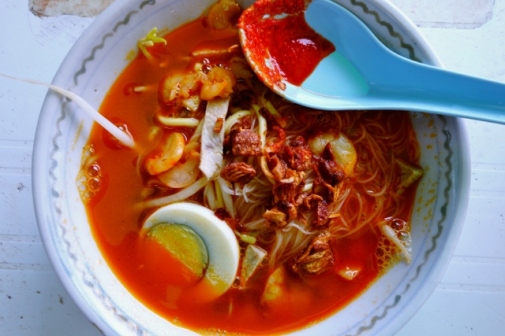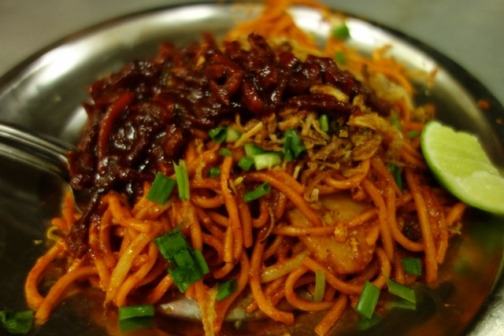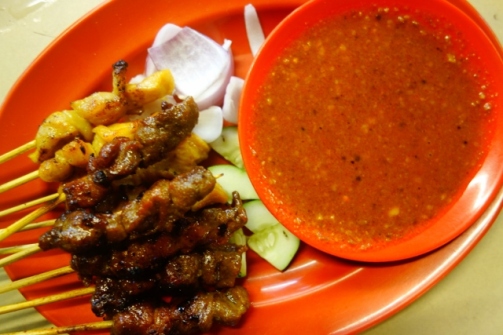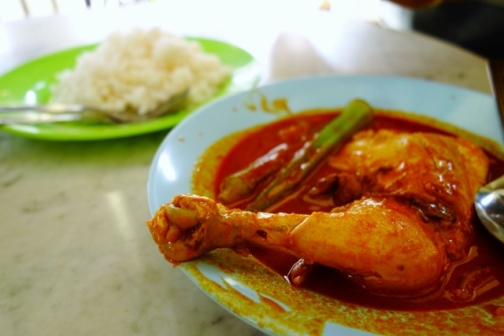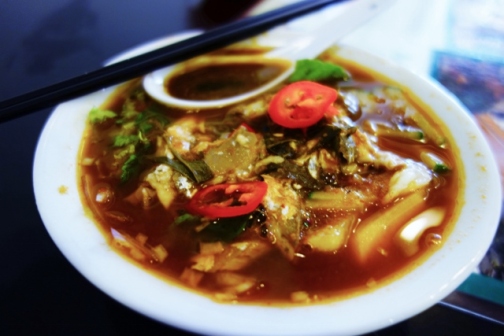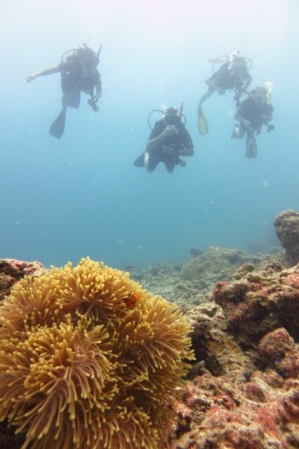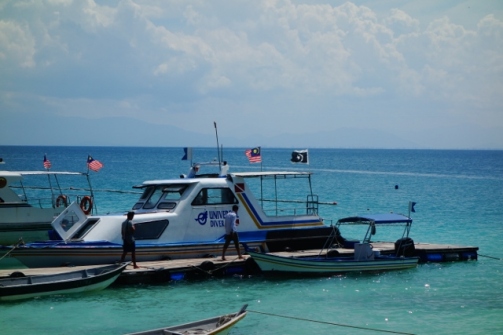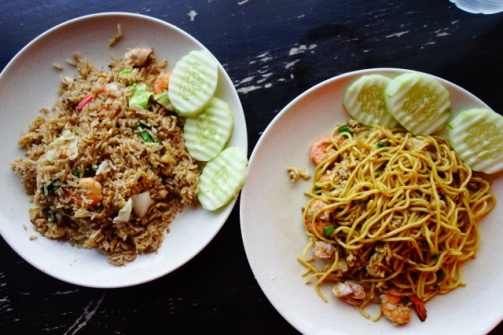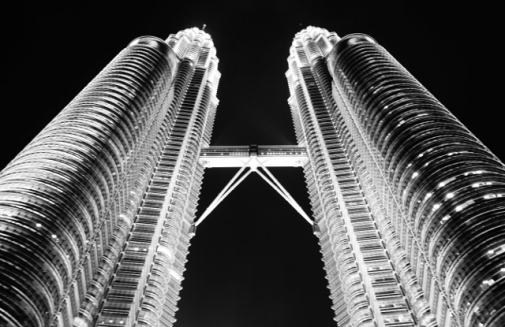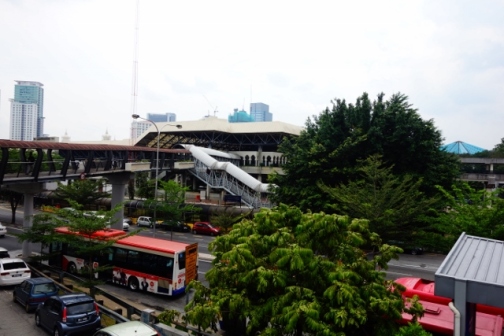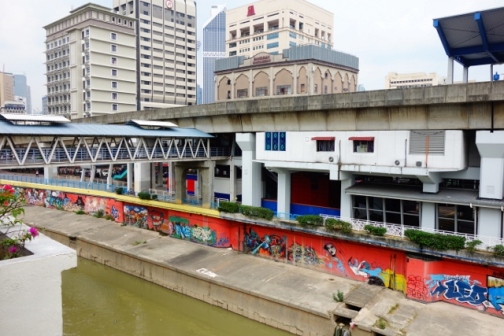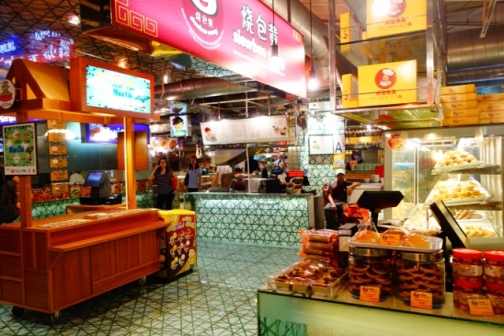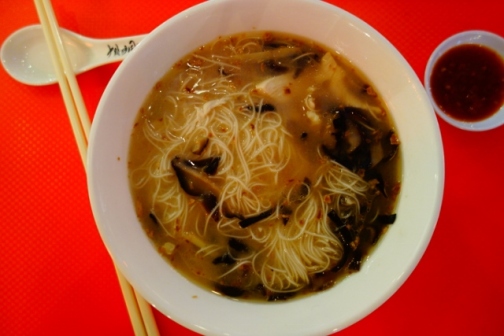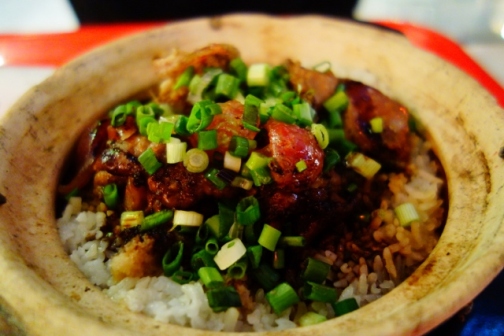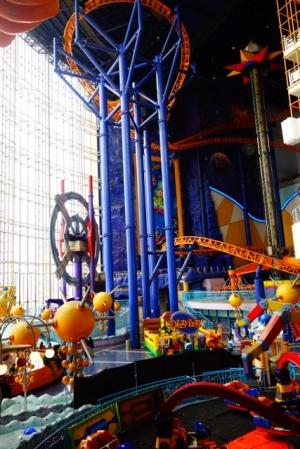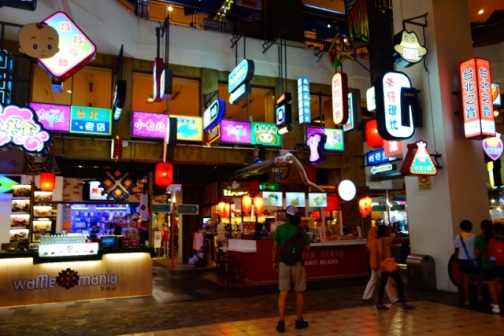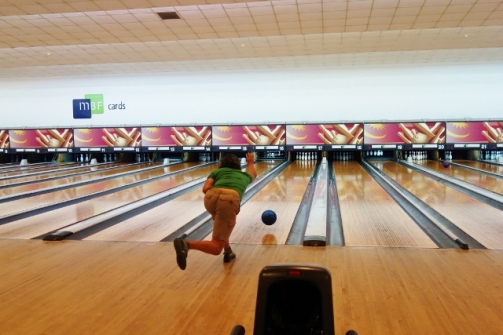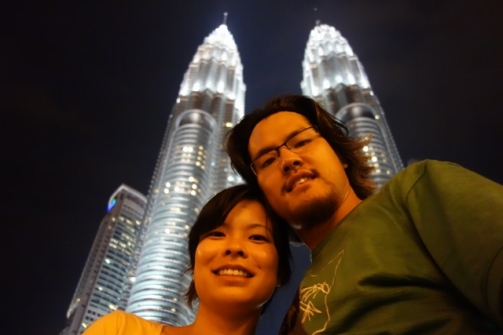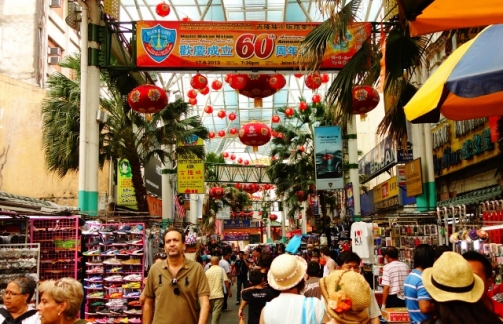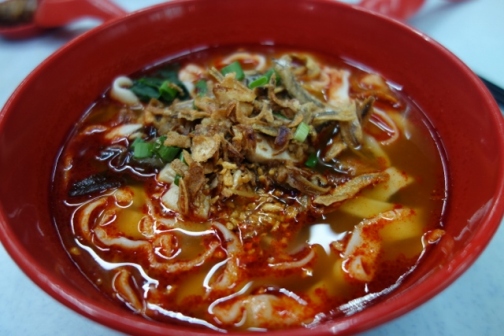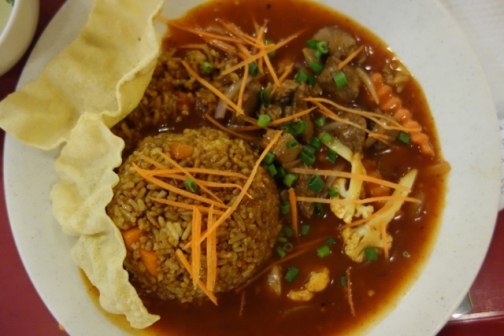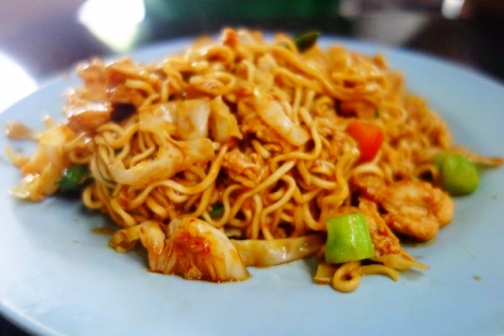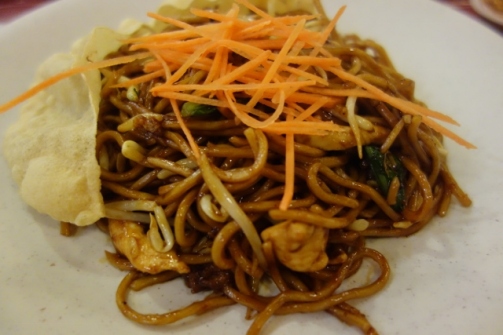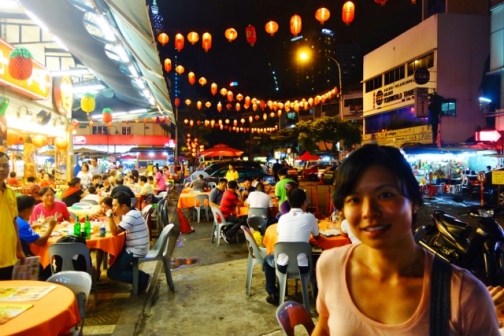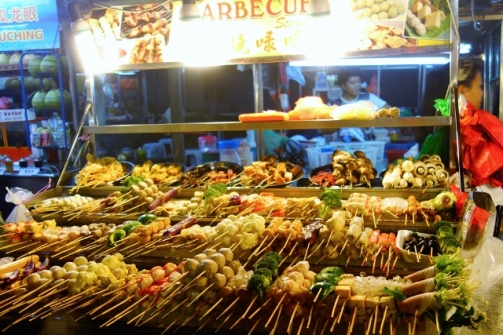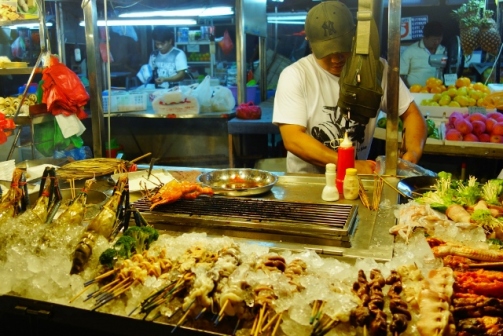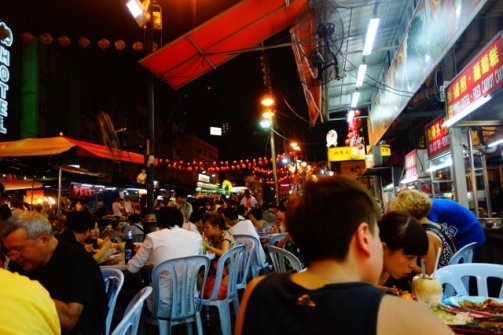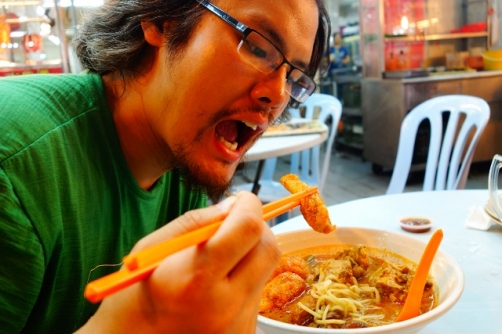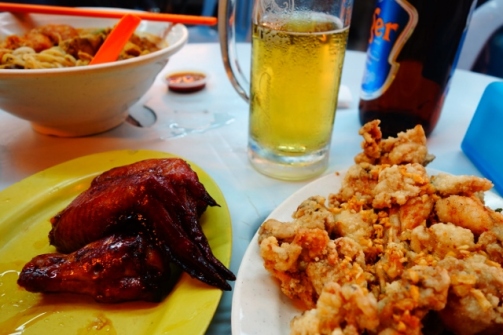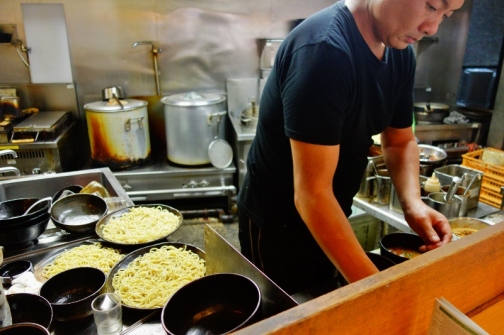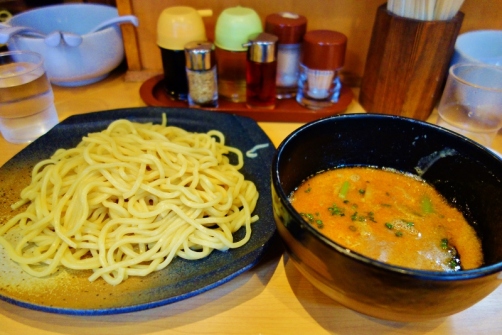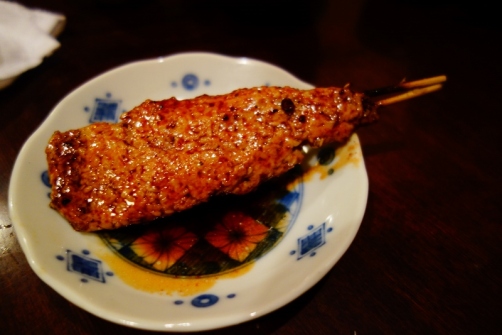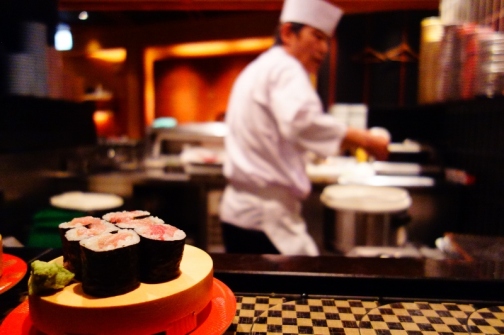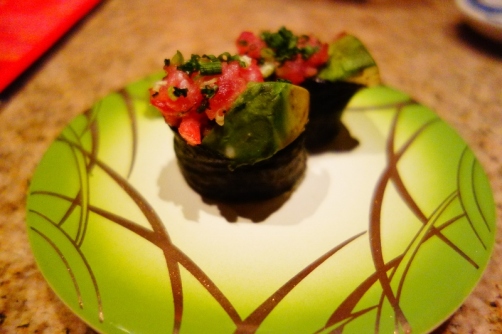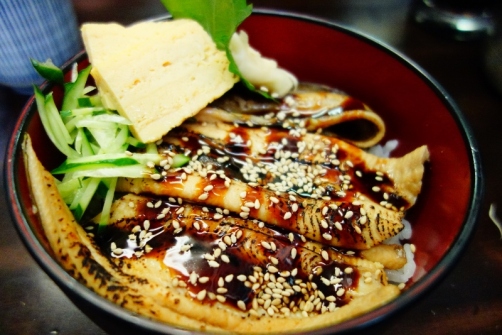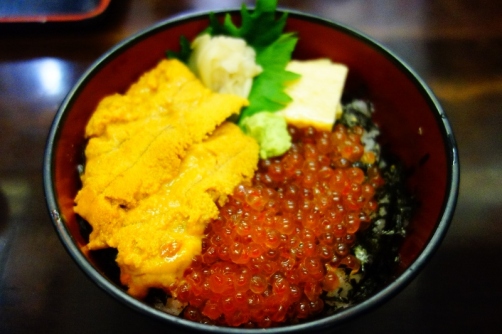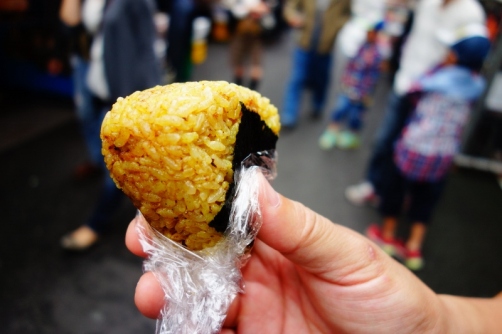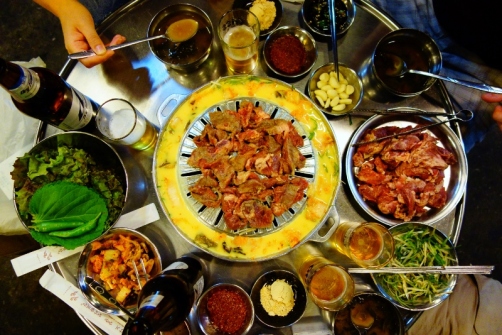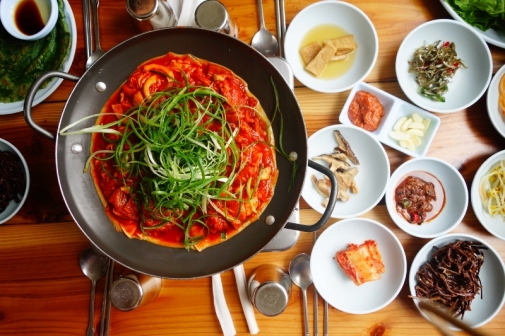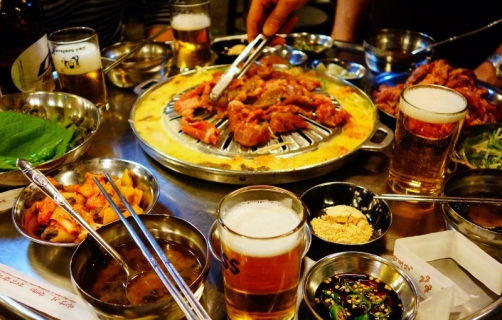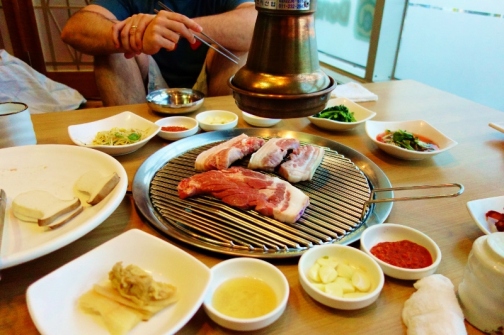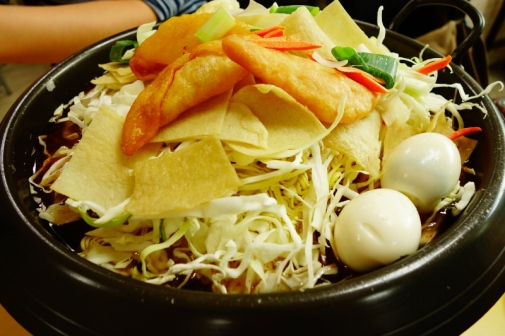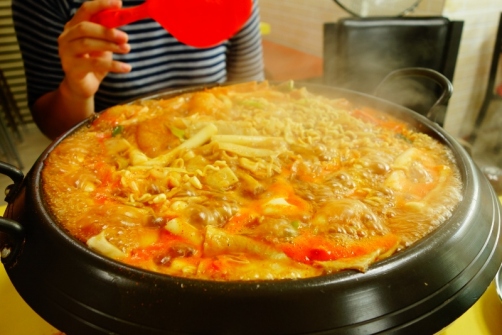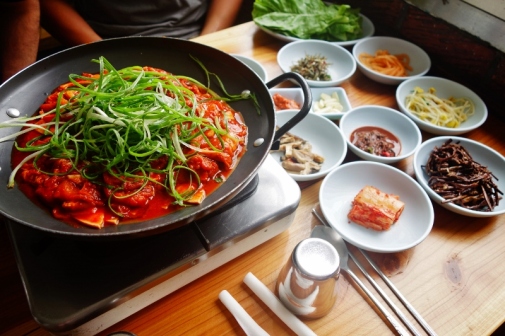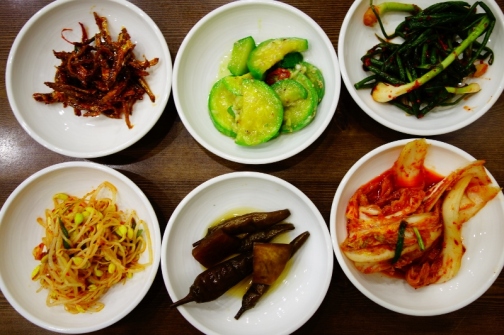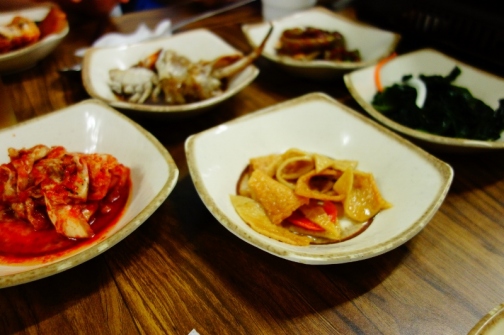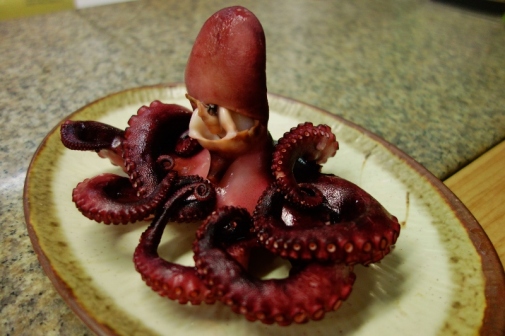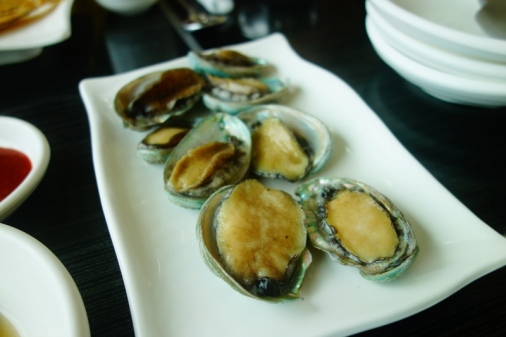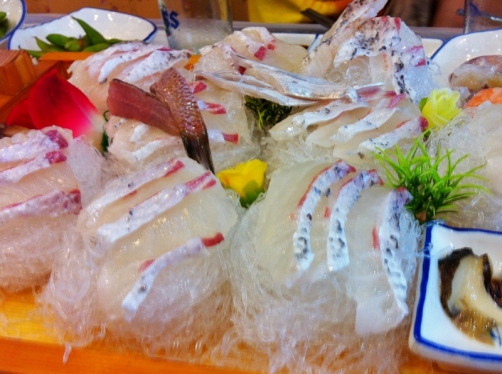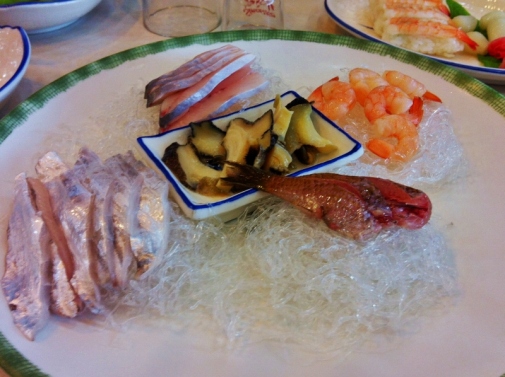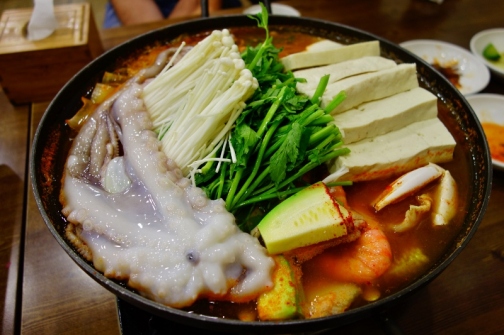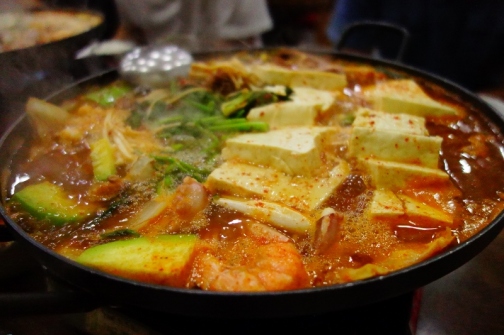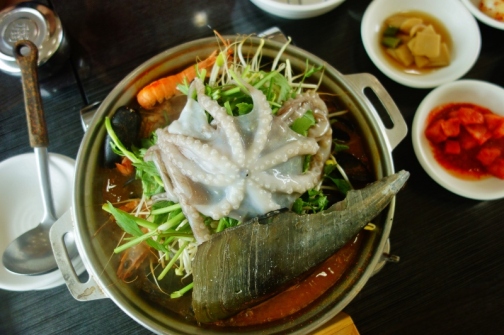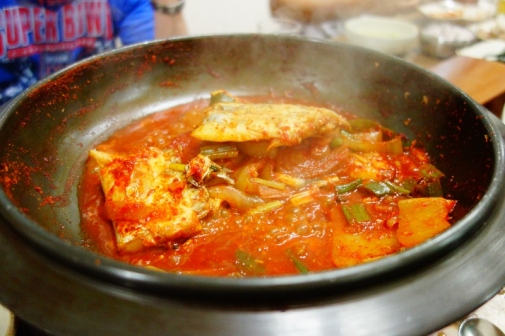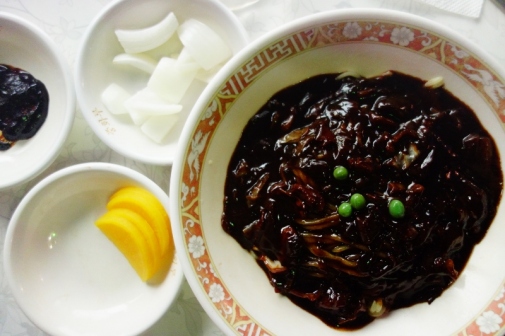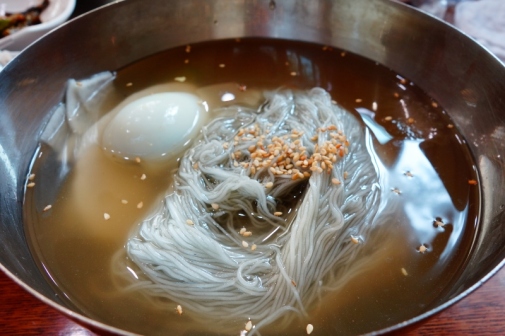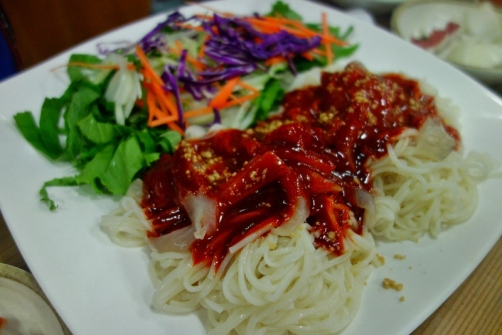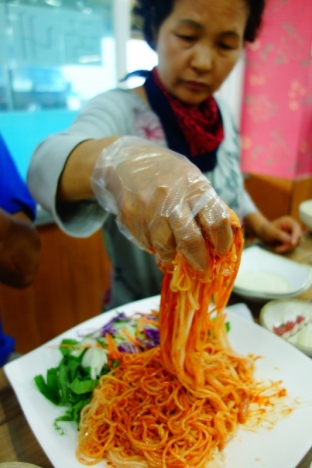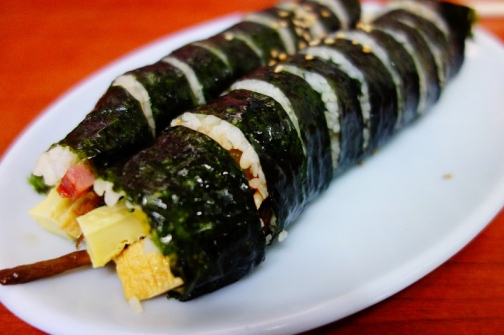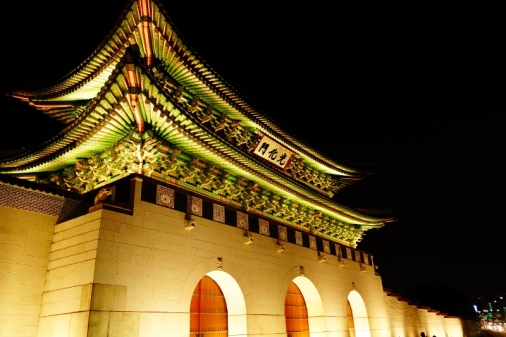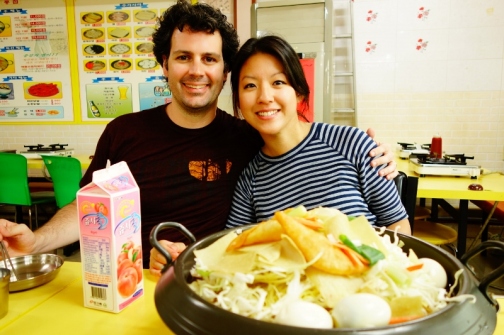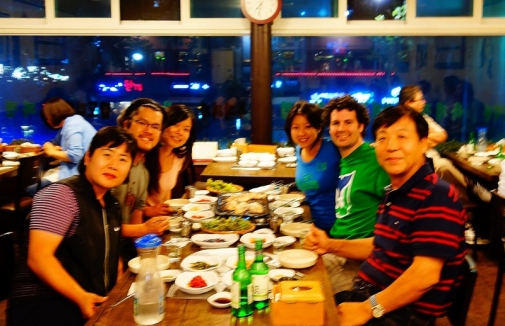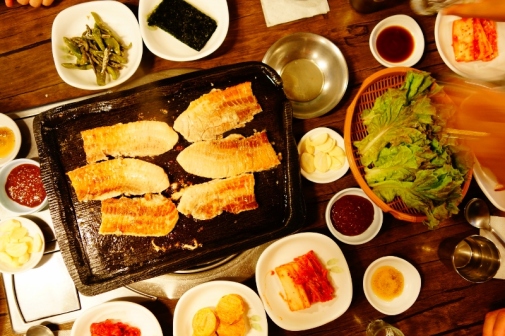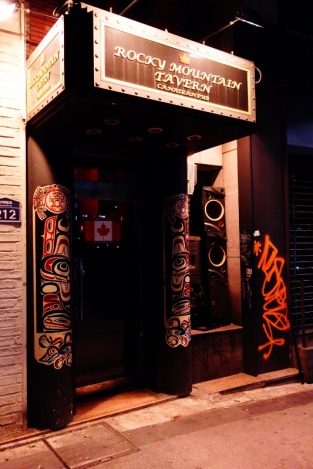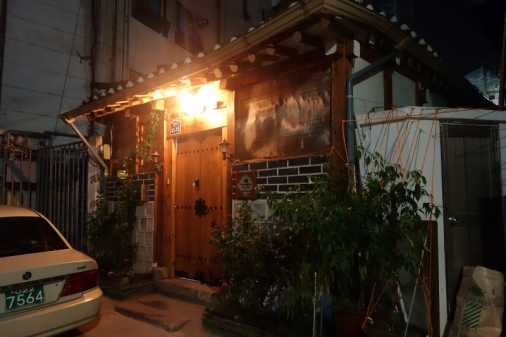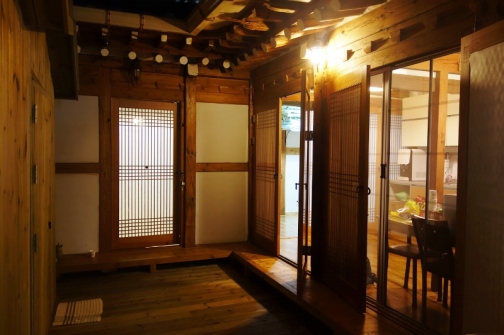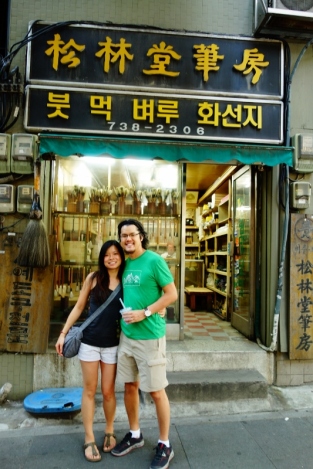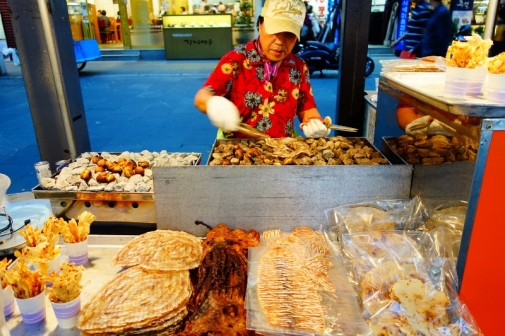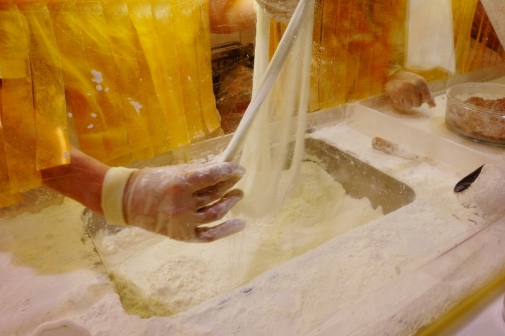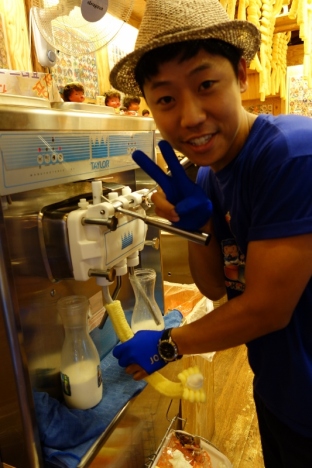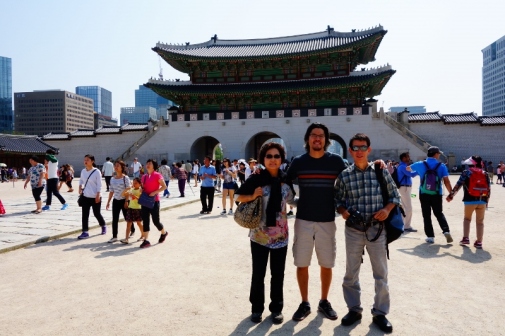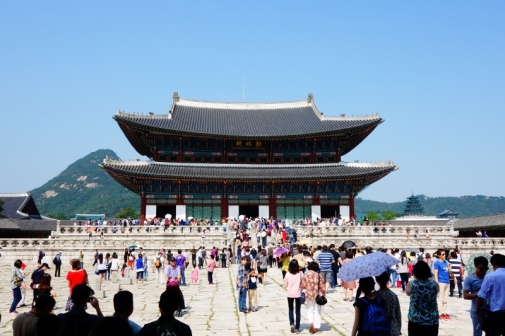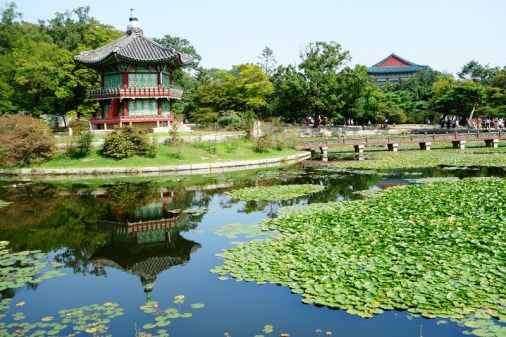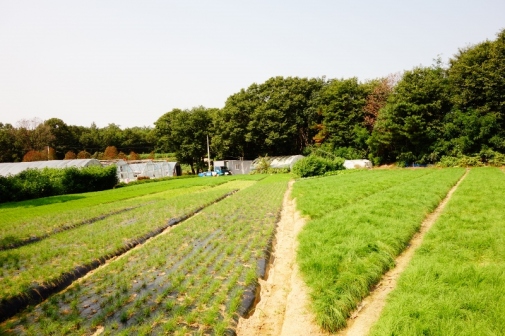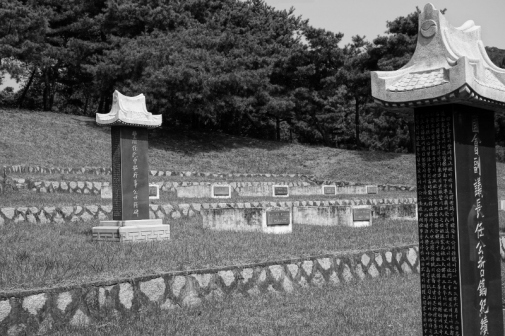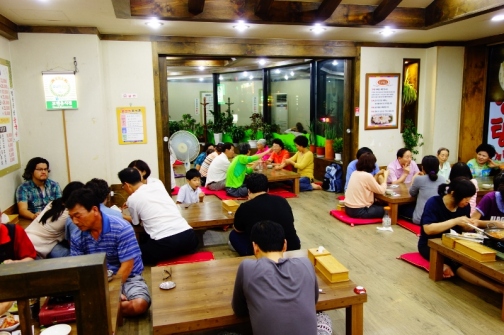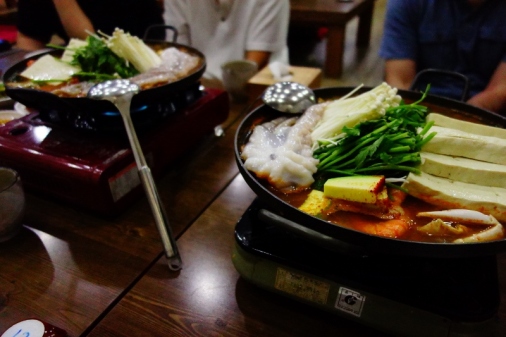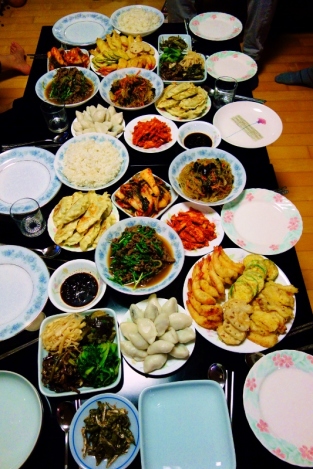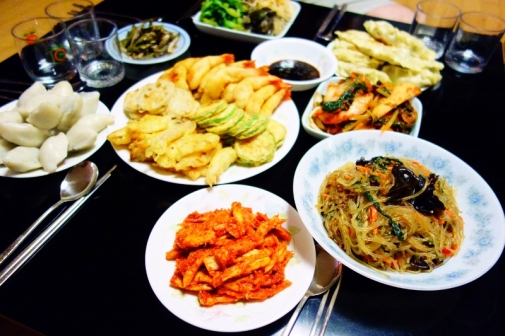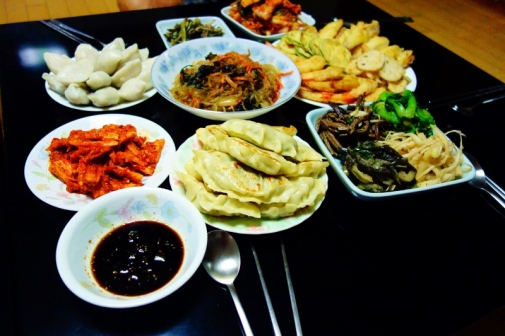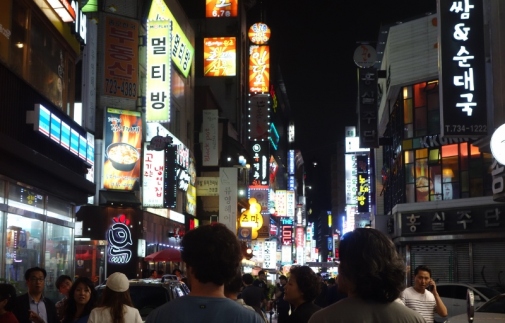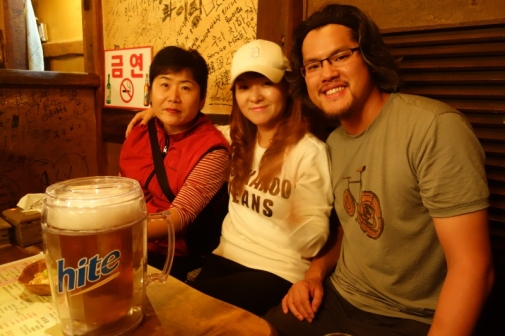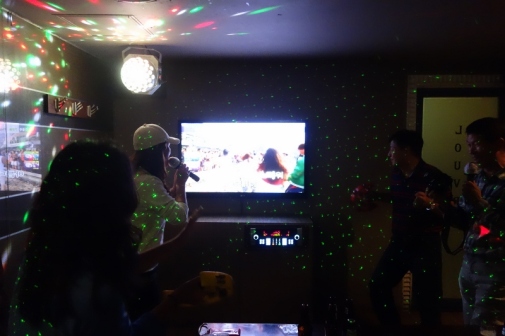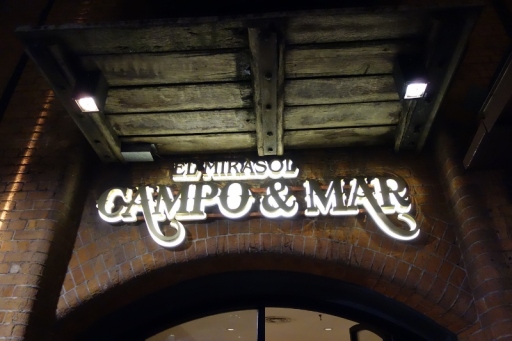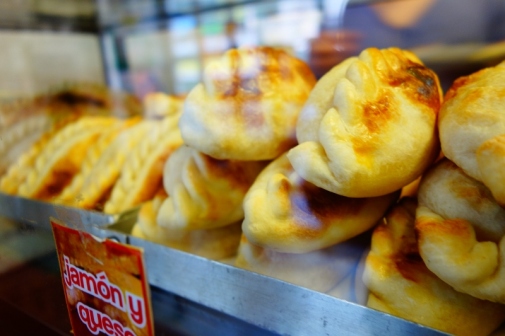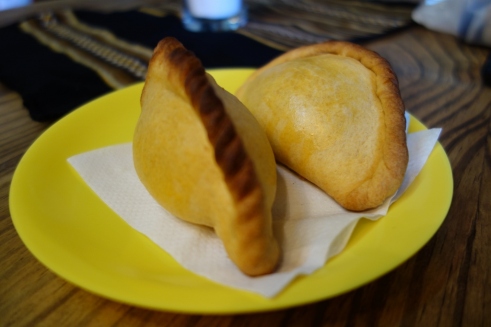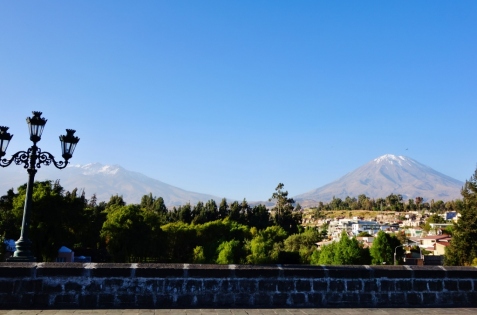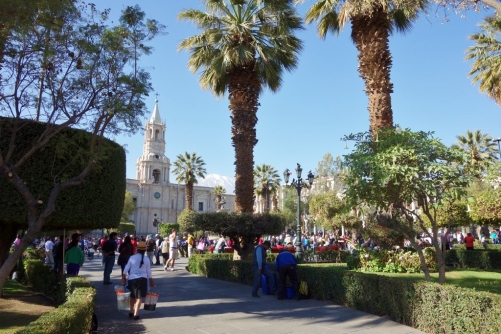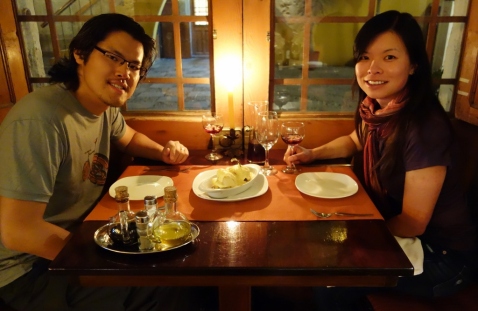George Town is the capital city of Penang. Penang is the food capital of Malaysia. So we had our expectations set REALLY high for this city. Recipe for failure? Um, no. More like recipe for the best Indian/Malay/Chinese food we’ve had since we arrived in Malaysia!
Before we even arrived in George Town, I emailed my friend Andrea who was just here with her husband six months earlier. We both follow this excellent food blog called EatingAsia. Andrea had contacted the talented blogger and received an email containing a couple of resources – most notably an amazing self-guided food tour that she published in the Wall Street Journal.
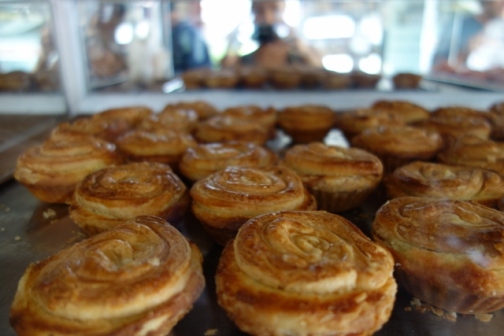
Coconut tarts at Leong Chee Kee, a hidden little bakery at the back of a parking lot off of Lebuh Cintra
During our twelve-day stay in George Town, we blocked off a full day to do the food tour. We made sure we woke up early and hungry and slowly ate our way through the city. The tour had us zigzaggin’ all over the colonial core of George Town – which was fine by us because we needed all that walking to burn off all the food we were consuming. The walking tour took us past places like Chowrasta Market – the largest wet market in George Town…
…to the Dim Sum institution, Aik Hoe – where elderly men socialize all morning over pots of hot tea and baskets of har gow (shrimp dumplings)…
..to little inconspicuous shops that specialized in making only one thing like Henry Yap’s yu char kwai (Chinese fritter) shop…
…to the sweets-laden shelves and flower-lined stalls of little India…
…to the longest-standing fort in Malaysia, Fort Cornwallis. Just to name a few. And that’s all in one day.
The food tour isn’t for the faint of heart or weak of stomach – and the trick to surviving the day was to graze (not gorge) at each stop. Otherwise, you won’t be able to make it even halfway through the tour. The intense heat doesn’t help either, so make sure to stay cool and hydrated.
Cool & Sweet
Luckily, there are a lot of places that serve cool delightful bowls of sweets. They might look a little strange but they are so tasty and refreshing in the 40ºC heat.
Cendol
This sweet, refreshing dessert gets its name from the green, chewy noodle that’s featured in this dish. It’s made from rice flour and coloured using a local herb called “pandan“. The bowl is filled with shaved ice, topped with red beans, cendol noodles, and drowned in coconut milk and gula (palm sugar syrup).
Ice Kacang
Another refreshing dessert option is Ice Kacang – a colourful mix of sweet corn, grass jelly, red beans over shaved ice and drenched in palm sugar syrup, rose syrup and evaporated milk. This little bowl packs a huge explosion of flavours that work surprisingly well together. Between Cendol or Ice Kacang, I personally enjoyed the latter more.
Kopi
Kopi (coffee) is everywhere in George Town. That’s because kopitiams (traditional coffee shops) are to Malaysia as Tim Hortons are to Canada. Locals love to sit for hours over a kopi and catch up over the day’s news and gossip. One of the better coffee shops we visited was Toon Leong (corner of Jalan Transfer and Jalan Argyll). We ordered the perfect glass of kopi peng (iced coffee sweetened with condensed milk)
Fruit Shakes
Malaysia offers a huge variety of fresh local fruit (mango, watermelon,guava, rambutan, star fruit, etc), so it’s no surprise that the fruit shakes and fruit juices are amazing. Fresh, sweet, and thirst-quenching – they’re available everywhere. My personal favourite was the lime juice from the juice stand at the corner of Love Lane and Lebuh Chulia,
Besides the food tour articles, the map in the picture below was absolutely indispensable during our stay in George Town. It contains pictures and descriptions of all the signature Malaysian dishes. along with locations of restaurants/stalls/stands that serve them. They’re available in almost all hostels and guesthouses so make sure to pick one up.
With this in your back pocket, you’ll be able to create your own food tour. Malaysians really know what they’re doing when it comes to food – especially in Penang, where the food choices are seemingly unending. Drawing from Indian, Chinese, Malay, Indonesian, Thai, and Arabian influences, Malaysian cuisine is a melting pot of drool-worthy flavours. (Hmmm..’melting pot’ and ‘drool’ should not be used in the same sentence.)
Indian-influence
I think one of the best things about visiting Malaysia is that it feels like you’re also visiting India. The Indian food in Penang was amazing. We found that we had Indian food more often than we had anticipated – only because it was so amazingly delicious. We craved it every single day.
Roti Canai
My personal favourite was Roti Canai – flatbread that’s pulled really thin, folded, and then grilled in oil. The perfect version is flat, crispy and flaky on the outside but fluffy on the inside.
My favourite version is found on Jalan Penang at a outdoor food stand called Sup Hameed. Order it with the fish curry for only RM1.00 ($0.33 CDN). We probably had it half a dozen times at . Simply phenomenal.
Curry and Naan
Another simple meal was various curries and dahl (a type of lentil stew) served with garlic naan (an oven-baked flatbread). So good and deceptively filling.
Thosai
We stumbled upon the restaurant Veloo Villas in little India and tried their amazing Thosai, a crispy fermented crepe or pancake. It served a variety a savoury tomato curry, coconut-based chutney, and dahl – which you scrape up with crispy pieces of Thosai. Little did we know, Veloo Villas was also listed on the self-guided food tour I mentioned above, so we happily sampled it again on our food tour day.
Thali
Thali is the ultimate meal for indecisive eaters. You know the ones who hum and haw at a menu for 20 minutes before they finally decide on what they’ll have as their appetizer? Thali is basically a platter of various dishes served in small metal bowls. You can choose various combinations but I think Jason and I must have both ordered the super-sized version – 11 dishes! It was really fun to eat as every dish was a surprise. I recognized maybe one or two of the dishes (dahl and a chutney) but everything else was completely foreign. Dishes ranged from curries, pickles, yogurt, dahl, vegetables, chutney, rice, roti and a dessert. We were set for the rest of the day after this meal.
Chinese-influence
I personally LOVED the Chinese-influenced dishes in Penang. I may be biased since it’s the food of my people, but the Malaysian twist in Chinese dishes was awesome.
Wan Tan Mee
This dish made it onto my ‘Top 5 Dishes from our Travels’ list. The humble Wan Tan Mee (pork or shrimp dumplings & noodles). This dish is comfort food for me since I grew up eating it. But I’ve only ever had the soup version. We tried the dry version in George Town at a little hawker stall on Lebuh Chulia (they start setting up right in front of the furniture store in the evenings).
And this dish changed my life. Well, at least when it comes to food. I now refer to time as “Before WanTan Mee” and “After Wan Tan Mee“. The yellow noodles are perfectly springy and chewy and are served in a dark soy sauce/sesame oil dressing. Simple but so mind-blowingly good.
You don’t have to take my word for it though, just check out the long lines that form in front of the stall every night. The husband and wife team move so quickly and efficiently that it’s hard not to be in awe.
We must’ve have come back to the stall at least half a dozen times throughout our stay in George Town. We even came back one night when it was raining so hard that the streets started flooding. We were pretty certain the stand would be closed – but we wanted to check anyway. We were absolutely delighted to see it was still open. Only the hard-core Wan Tan Mee-lovers were out: the two of us and another pair that sat across from us, huddled under the sheet-metal roof of the closest building.
And considering how many times we had this amazing dish, I surprisingly don’t have a single good photo of it. Although, I think the photo below explains it well – I always scarfed it down before I remembered to stop and take a picture.
Dim Sum
Another favourite of ours – we ended making repeat visits to Aik Hoe (6 Lebuh Carnarvon) for a cheap and tasty breakfast. I’ve had a lot of Dim Sum in my life and I can definitely understand why this place is now an institution in George Town.
The Dim Sum was so fresh since the restaurant was always packed – they were constantly churning out new batches. The har gow (shrimp dumplings) was made perfectly. And make sure to also try the made-to-order xiao long bau (soup-filled dumplings)
Hot Pot
I’m already a huge fan of Hot Pot at home. There’s nothing more satisfying than cooking up your own food and dipping it into the perfect bowl of DIY sauce. We passed by this hot pot stall (near Lebuh Chulia and Love Lane) a couple of times before we decided to give it a go.
Personally, I think it’s a little gimmicky but it’s still fun. And great for a quick snack! You just grab a couple of skewers of meat/vegetables/seafood, cook them up in one of the vats of broth, and dip them into various sauces that you spoon onto your plate.
Southern Chinese
We tried to look for turkey on Canadian Thanksgiving day but we had to settle for braised duck instead. We visited the popular Tek Sen (18 & 20 Lebuh Carnarvon) – beloved by locals and tourists alike. Having been around for almost half a century, it’s built a solid reputation and a strong local following. Serving mainly Southern Chinese food (Teochew, Hakka, Hokkien, Cantonese, Sichuan), you’ll likely be able to find something that will suit any palate.
We ended ordering a mini-feast: braised duck, stir-fried pea shoots, and braised tofu. Thanksgiving: Malaysian-style!
Duck Kuay Teow Th’ng
Kuay Teow Th’ng (Flat rice noodles in soup) is divine. My favourite version is the duck meat. It’s hearty and comforting, yet light and delicate at the same time.
Silky smooth rice noodles. thin slices of seasoned duck meat, and finely-chopped scallions come together perfectly in a delicately-flavoured consomme.
Hainanese Chicken Rice
This dish sounds very simple but every aspect of it needs to be prepared perfectly for the whole dish to work. The chicken: delicately flavoured, the skin is thin and crispy, and the meat is juicy and tender. The rice: seasoned and lightly dressed with oil. The extras: thin slices of cucumber to soak up the grease, slices of green onion for flavour, and a bowl of light chicken broth to wash it down. The crowning touch: the perfect house-made hot sauce. My favourite version is found at Wen Chang Hainan Chicken Rice (63 Lebuh Cintra)
Hokkien Mee
It took us a long time to discover this delicious dish. I think it was on Day 11 of our 12-days in George Town that we stumbled upon this excellent version in the massive group of food stalls right outside Gurney Plaza. When you finally decide to rent a car or bike to get out of the downtown core, make sure to drop by for a bowl of hearty, spicy goodness. A thick, fragrant prawn and pork-based broth surrounds the springy yellow noodles and rice vermicelli. It packs just enough heat and the strong prawn-flavour is rounded out by a slight sweetness. I didn’t expect this dish to be this delicious and really regretted discovering it so late in our stay in George Town.
Malay-influence
Mee Goreng
You’ll likely see Mee Goreng available all over George Town. It’s a popular dish in Penang. But if you want to try a special version, head to Hameed’s food court stall (one of a handful of food stalls that are still open in the sad-looking food court next to Fort Cornwallis) and try the Mee Goreng Sotong. The super-spicy sambal sotong sauce that’s spooned on top of the yellow noodles might bring tears to your eyes (it’s up to you whether they’re tears of joy or tears of pain). Chewy strands of squid, cubes of potato, chopped green onions and a squirt of lime round out this fiery plate of noodles.
Satay
Seasoned, skewered, and grilled meats over hot coals or wood fire. Everything tastes good on a stick! Especially when it’s served with an amazing chili sauce, crunchy cucumber slices and pieces of sweet onion.
Nasi Kandar
This simple meal originates from Penang and quite simply consists of steamed rice and various curries, meats, and vegetables. As part of our self-guided food tour, we tried the version served at Toon Leong coffee shop. The term nasi kandar originates from Malaysian street hawkers who used to carry around their food by balancing two large containers of nasi (rice) and curry that hung from either ends of a long kandar (pole).
Assam Laksa
Also referred to as Penang Laksa, this is the dish that catapulted Malaysia into A-list celebrity/Can’t-go-anywhere-without-being-by-hounded-by-paparazzi status. It’s the only noodle dish in Penang that uses a fish-based broth. The broth is a wonderful medley of poached mackeral, lemongrass, chillies and assam (tamarind) – ingredients that give this dish its unique tangy and savoury flavour. It’s served with thick rice noodles and then topped with sliced cucumbers, lettuce, red chilies, and tons of fresh mint leaves! It’s an amazing dish that’s different from all other types of laksa sold in Malaysia. I haven’t been able to have it again since we’ve left – so make sure you get your fill before you leave Penang.
So there you have it: a comprehensive run-down of our food adventure in Penang. George Town was an exceptional city and is definitely one of the highlights of our travels in Southeast Asia so far.
We arrived with high expectations and left with huge smiles, full bellies, and tastebuds still tingling.

